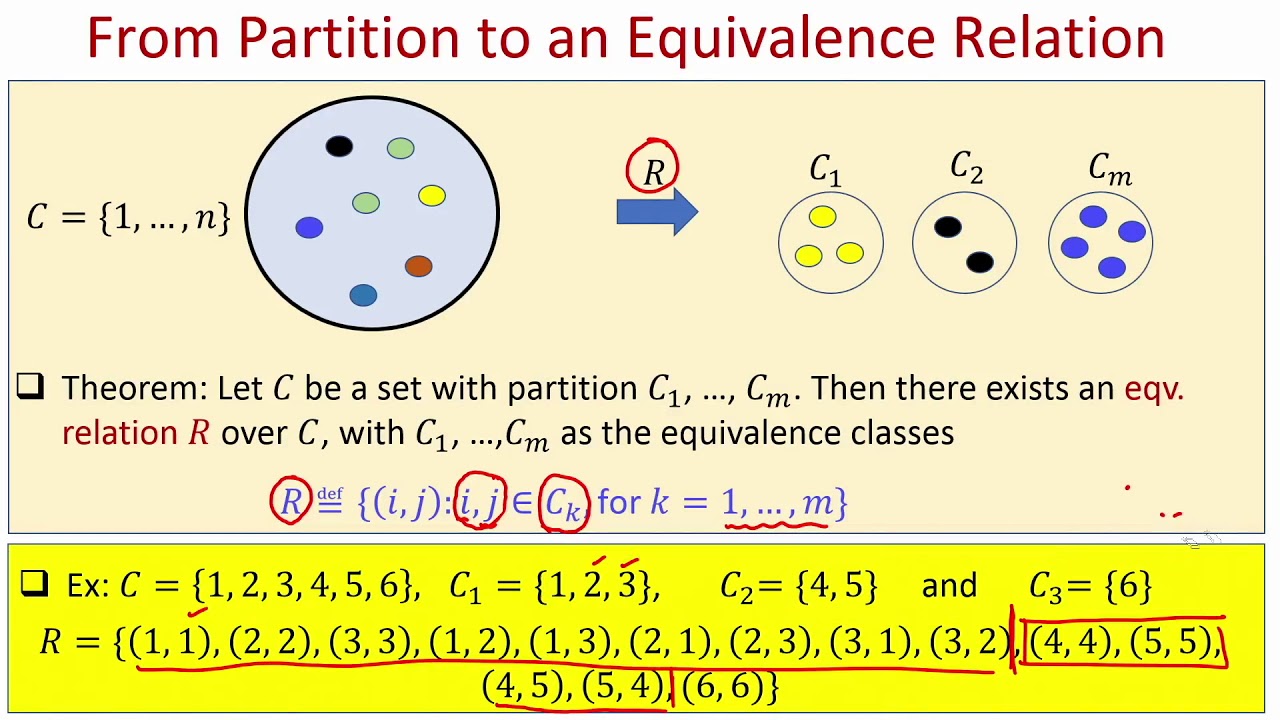
What are equivalence relations? Equivalence relations are special types of relationships in mathematics that group objects together based on certain rules. These rules make sure that the relationship is reflexive, symmetric, and transitive. Why are they important? They help us understand how different objects can be considered the same in some way, making complex problems easier to solve. Where do we see them? Equivalence relations pop up in many areas like geometry, algebra, and even computer science. How do they work? Imagine sorting a bunch of socks by color. Each color group is an equivalence class, and the sorting rule is the equivalence relation. Ready to learn more? Let's dive into 28 fascinating facts about equivalence relations!
What is an Equivalence Relation?
Equivalence relations are a fundamental concept in mathematics. They help group elements that share a common property. Understanding these relations can simplify complex problems.
- Definition: An equivalence relation on a set is a relation that is reflexive, symmetric, and transitive.
- Reflexive Property: Every element is related to itself. For example, in a set of numbers, each number is equal to itself.
- Symmetric Property: If one element is related to another, then the second element is related to the first. If a = b, then b = a.
- Transitive Property: If one element is related to a second, and the second is related to a third, then the first is related to the third. If a = b and b = c, then a = c.
Examples of Equivalence Relations
Examples make abstract concepts easier to grasp. Here are some common examples of equivalence relations.
- Equality: The most straightforward example. If two numbers are equal, they are related.
- Congruence Modulo n: In number theory, two integers are congruent modulo n if their difference is divisible by n. For instance, 7 and 12 are congruent modulo 5.
- Parallel Lines: In geometry, two lines are parallel if they never intersect. This is an equivalence relation among lines.
- Similarity of Triangles: Triangles are similar if their corresponding angles are equal and their sides are proportional.
Applications of Equivalence Relations
Equivalence relations are not just theoretical; they have practical applications in various fields.
- Partitioning Sets: Equivalence relations can partition a set into disjoint subsets called equivalence classes.
- Cryptography: In cryptography, equivalence relations help in creating secure communication channels.
- Database Management: Equivalence relations are used to manage and query relational databases efficiently.
- Coding Theory: They help in error detection and correction in coding theory.
Equivalence Classes
Equivalence classes are subsets formed by grouping elements related by an equivalence relation.
- Definition: An equivalence class is a subset containing elements that are all equivalent to each other.
- Notation: If ~ is an equivalence relation on a set, the equivalence class of an element a is denoted by [a].
- Unique Partition: Every element of the set belongs to exactly one equivalence class.
- Example: In the set of integers, the equivalence class of 0 under congruence modulo 3 is {…, -6, -3, 0, 3, 6, …}.
Properties of Equivalence Classes
Equivalence classes have unique properties that make them useful in various mathematical contexts.
- Disjoint: Equivalence classes are disjoint; no element can belong to two different classes.
- Union: The union of all equivalence classes is the entire set.
- Cardinality: If the set is finite, the number of equivalence classes is also finite.
- Representative: Each equivalence class can be represented by any of its elements.
Real-World Examples
Equivalence relations are not just confined to textbooks; they appear in everyday life.
- Social Networks: People are grouped based on mutual friendships, forming equivalence classes.
- Language: Words with the same meaning form equivalence classes in a thesaurus.
- Legal Systems: Laws that apply equally to all citizens create equivalence classes of individuals.
- Education: Students grouped by grade level form equivalence classes.
Advanced Concepts
For those who want to dive deeper, here are some advanced concepts related to equivalence relations.
- Quotient Sets: Formed by partitioning a set using an equivalence relation.
- Homogeneous Spaces: Spaces that look the same at every point, often described using equivalence relations.
- Factor Groups: In group theory, equivalence relations help define factor groups.
- Topological Spaces: Equivalence relations are used to define quotient topologies in topological spaces.
Final Thoughts on Equivalence Relations
Equivalence relations might seem tricky at first, but they’re super useful in math and computer science. They help us group things that are similar in a meaningful way. Remember, an equivalence relation needs to be reflexive, symmetric, and transitive. This means each element relates to itself, if one element relates to another, the second relates back, and if one relates to a second and the second to a third, the first relates to the third. These properties make it easier to understand complex structures by breaking them into simpler, related parts. Whether you’re working with numbers, shapes, or even data sets, understanding equivalence relations can simplify your work. Keep these facts in mind, and you’ll find them popping up in all sorts of interesting places!
Was this page helpful?
Our commitment to delivering trustworthy and engaging content is at the heart of what we do. Each fact on our site is contributed by real users like you, bringing a wealth of diverse insights and information. To ensure the highest standards of accuracy and reliability, our dedicated editors meticulously review each submission. This process guarantees that the facts we share are not only fascinating but also credible. Trust in our commitment to quality and authenticity as you explore and learn with us.
